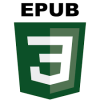Tutorials and courses explaining a technology or technique for implementing accessibility
Featured Links
 Accessibility Masterlist
Accessibility MasterlistAccess techniques and strategies for all barriers and disability categories
 Quicksheets
QuicksheetsCatch information quickly using our summaries in different areas
 Tutorials
TutorialsTutorials, manuals and courses to help you build accessibility
 Bibliography
BibliographyA directory of essential accessibility resources in the web








